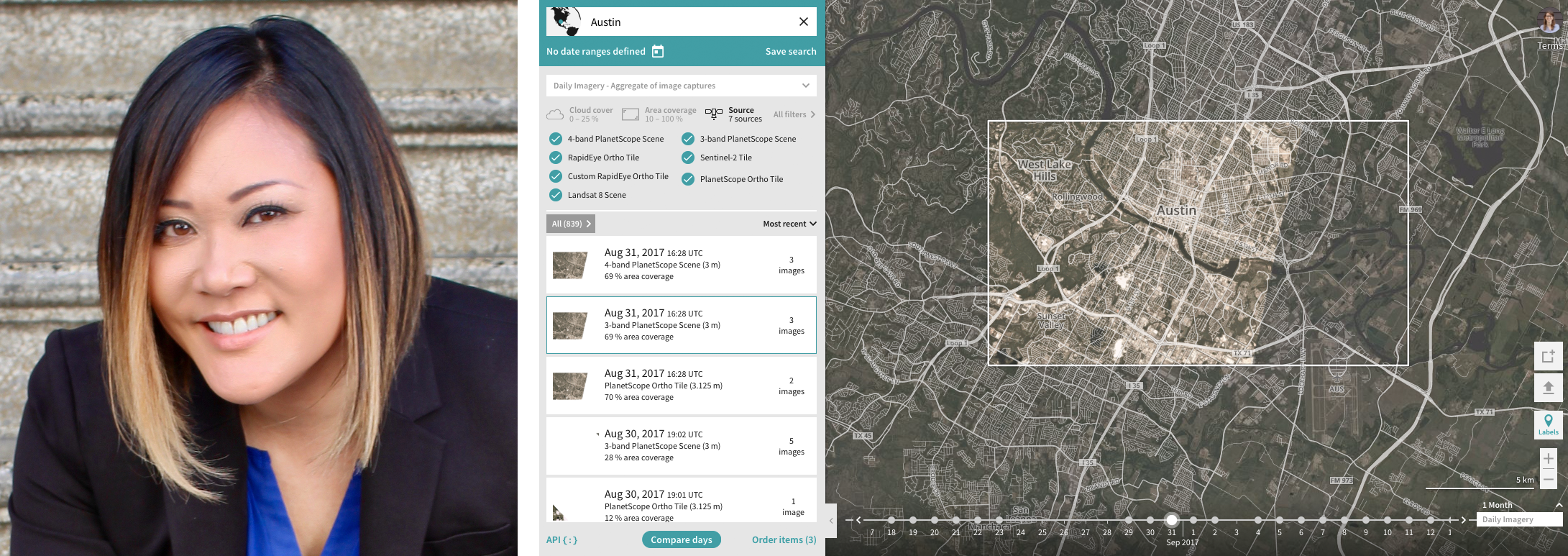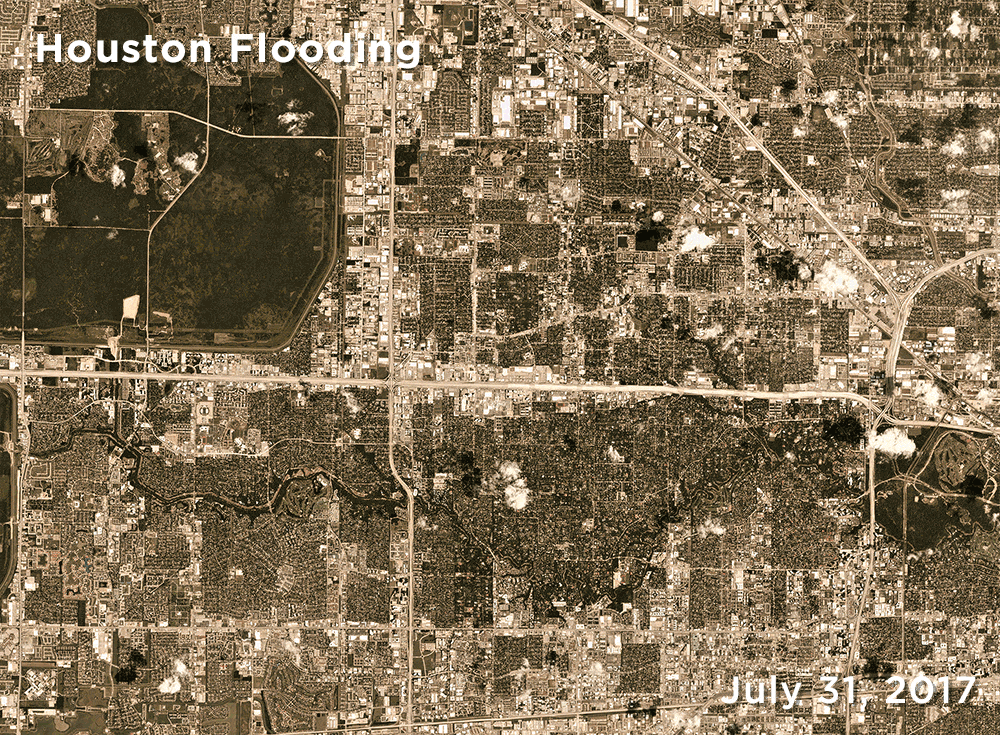Q&A with Amy Truong—Engineering Leader
If you’re attending the Grace Hopper Conference this year, don’t miss two talks from Amy Truong, Planet’s Director of Software Engineering. Our software team has been one of the fastest growing teams at Planet this year; and Amy has overseen its transition from startup-sized developer squad to growth-stage engineering organization. At Planet, Amy leads the organization that builds the Planet Platform: the APIs and GUIs that allow customers to explore and analyze satellite imagery.

In the lead up to the Grace Hopper 2017, I did a quick Q&A session with Amy to learn about her origins in tech; her career as an engineering leader, and the hard technical problems she solves. Check it out:
Q: How did you get started in tech?
A: Throughout grade school, I had set a goal of going to medical school, but after working on a 4-year microbiology science fair project, I realized that I was more excited about what I was learning in my 12th grade Computer Science class, which I had serendipitously enrolled in as an elective. My teacher was a woman, and what I loved most about that class was that it didn’t seem to matter what I looked like, or how many years of programming experience I had prior to that class. What mattered most with my classmates and my teacher was that we all came up with different ways of solving the same problem. After that, I went to the University of Texas at Austin and graduated with a BS degree in Computer Science. My first internship was at IBM, which had a large office in Austin. I then transitioned into a full-time job, developing automation tools for a successful revenue-generating product called WebSphere Application Server. This was in 2002, and I had stayed with the company for almost 10 years. During my time at IBM, I led my first team as a tech lead, and I had my first experiences managing various software development teams across the IBM Software division.
Q: So where’d you go next?
A: I learned a lot about the business, and I had great mentors who taught me a lot about leadership. But ultimately, after almost a decade of working at the same company, I wanted a change. I went to Rackspace (in Austin), as an engineering manager for a team that was starting an open source project called Trove, which was a Databases-as-a-Service incubation project that became an official part of OpenStack. In parallel to this, I led the same team to build the commercial Rackspace Cloud Databases product powered by this open source project. Throughout this experience, I learned a lot about the open source community, and I started teaching myself Python with the support and encouragement of the PyLadies Austin chapter.
Q: Then you moved to San Francisco?
A: Yes, after Rackspace, I joined Twitter as an engineering manager. I led a team that built developer tools for over 2,000 Twitter engineers. This was my first immersion in the tech culture in San Francisco. Here I learned about the nuances of hiring and managing a team in the Silicon Valley, particularly at a highly visible well-known company that was competing for talent from other well-known Silicon Valley companies.
Q: What do you think makes Planet different from the other places you’ve worked?
A: One of our engineering core values at Planet is that we think of our team as an orchestra. This orchestra is made up of people who work together to practice and perfect their craft, but equally important we all work together to create something amazing. My background is in software development, and I have to trust that the other Planeteers who specialize in spacecraft (and other areas that I’m not an expert in) to play their part in order for us to achieve our company’s mission. What we do is challenging, but there is not one single person who can do everything alone. So, when I’m building my team, I look for individuals who will bring the right skills to complement the team and bridge gaps.
Q: This sounds kind of different from the usual “rockstar” formulation, where companies say they want to hire rockstars or ninjas.
A: I don’t like the word rockstar because there’s only one rockstar that gets all the spotlight, and I don’t want to find a ninja who codes in the dark. We need a healthy high-performing team in order to accomplish great things.
Q: Name one hard problem that you’ve been working on?
A: Just one? Well, for starters, it’s been challenging (and exciting) to transition Planet’s software engineering organization from early stage through the next phases of growth, and there are hard choices that come with it. Over the last year, we’ve had to take a close look at what we’ve built and determine which of our APIs, customer applications, and infrastructure we wanted to invest in further. We examined the cost it would take (in both person hours and dollars) and had an objective conversation about what our team needed to do in order to grow and scale our platform.
The next big challenge is evolving our platform (which serves daily imagery of the entire world) to enable users to derive actionable insights through core machine-learning based analytics. That’s what I’ll be concentrating on for the foreseeable future.
Q: How far along are you in this project?
A: Building this platform has been multiple years in the making. The first step was stabilizing our data platform by launching an updated Data API and a new UI called Planet Explorer to enable users to easily search and discover our daily imagery. Our next focus is on designing and developing our platform for analytics so that our users can extract meaningful information from our data. My engineering leads and I are currently partnering with our sales and product teams to engage with our users to better understand the problems we can help them solve.
Q: One last question: You stare at satellite imagery all day—is there a part of the world that interests you the most from above?
A: Lately, it’s Houston. As a former Texan, I’ve been keeping an eye on Houston in the wake of Hurricane Harvey. From space, you can see floodwaters inundate homes, parks, and roads.





